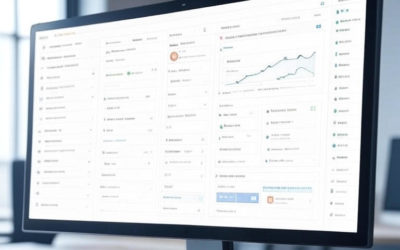Artificial intelligence (AI) is no longer reserved for large enterprises with massive data warehouses and dedicated data teams. Small and medium-sized enterprises (SMEs) are beginning to see the benefits of applying AI to everyday operations — from understanding customer behavior to spotting new sales opportunities. Yet, one of the biggest hurdles for SMEs is not access to AI tools, but the flow of reliable, timely data into those tools.
This is where smarter data syncing comes in.
The Challenge SMEs Face With Data
Most SMEs already have valuable data locked inside their systems. Whether it’s a MySQL or PostgreSQL database running behind a website, sales data in an OpenCart or WooCommerce store, or customer records in a bespoke piece of software, the information is there. The problem is that it’s often siloed, inconsistent, and difficult to move into the AI workflows that can generate insights.
- Manual exports that waste time and are prone to error
- Inconsistent formats that make combining datasets a technical nightmare
- Sensitive data fields that create compliance and privacy concerns
- Lack of in-house data engineering expertise to manage complex pipelines
Why Syncing Matters in the Age of AI
AI models, dashboards, and prospecting tools are only as good as the data they receive. Outdated or incomplete data means decisions are made on yesterday’s information. Smarter syncing ensures:
- Freshness: Sales and customer insights reflect the current state of business, not last week’s exports.
- Consistency: Data from multiple sources lines up correctly, so AI can analyze it meaningfully.
- Security: Sensitive details can be redacted or masked before leaving the original system.
- Scalability: As the business grows, syncing can handle larger volumes without additional manual work.
Practical Benefits for SMEs
- Enhance prospecting: Feed real transaction data into AI prospecting tools to identify new leads.
- Improve seller insights: Monitor sales trends, customer lifetime value, and purchasing behavior in real time.
- Streamline reporting: Keep dashboards automatically updated without constant spreadsheet juggling.
- Unlock automation: Trigger workflows based on fresh data, such as offers or anomaly alerts.
Looking Ahead
As AI adoption spreads, SMEs will need to think of data syncing as a core business capability, not an optional add-on. Those who make the investment early will position themselves to compete not only with peers but also with larger players in their market.
The bottom line: for SMEs, smarter data syncing isn’t about managing big data — it’s about making better use of your data.


